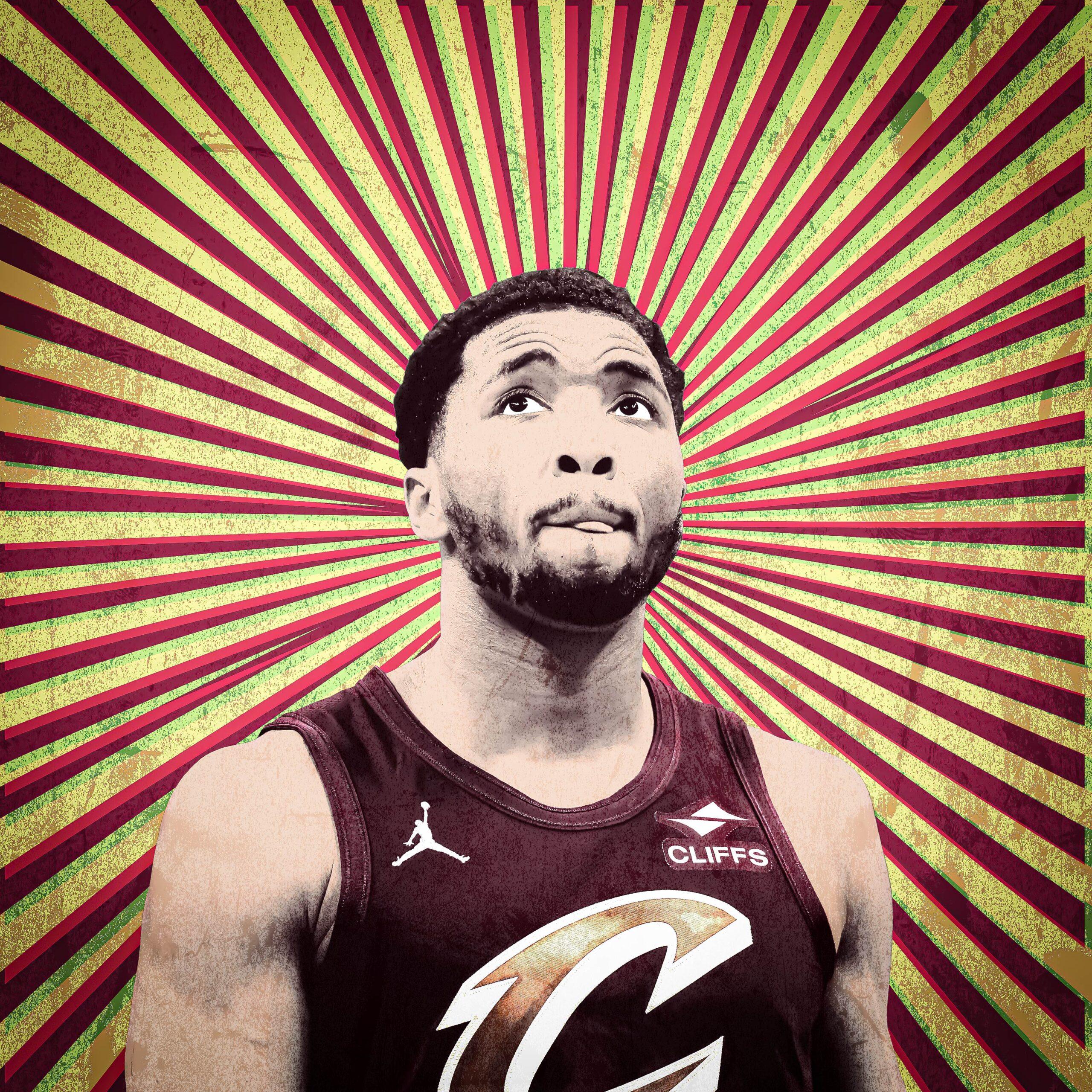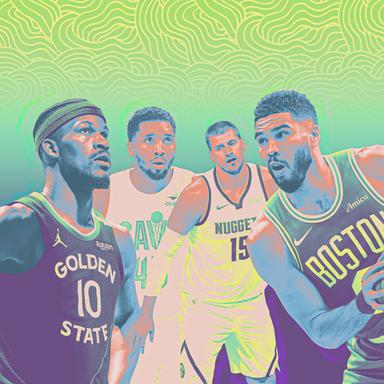
The Cleveland Cavaliers finished the regular season with 64 wins, the NBA’s most efficient offense, and both the Defensive Player and Coach of the Year. They entered the postseason as a clean buzz saw, slicing through the Miami Heat in four games with all their depth, balance, physicality, and zip on display. It was all irrelevant on Sunday night, though, in one of the most bewildering and pitiful performances you’ll ever see from a top seed in a playoff game.
Against a scintillating Indiana Pacers team that seemingly made every shot, nailed every adjustment, and executed with relentless intention, the Cavaliers lost 129-109. The final score doesn’t do the domination justice: Tristan Thompson played the entire fourth quarter; nothing could possibly be more devastating than that (except possibly whatever the hell happened at the end of Game 2).
The Cavaliers, now down 3-1, can either win on Tuesday night or spend the entire summer hearing old suspicions resurface about their core. Is the starting backcourt too small? Can they generate enough spacing when Evan Mobley and Jarrett Allen share the court? Can the ethical system that carried them through 82 games translate against an opponent that has enough discipline to muck up their preferred plans?
Some of these questions are either premature or a little unfair. Darius Garland, Mobley, and De’Andre Hunter are still not 100 percent after missing time earlier in the series; Donovan Mitchell’s ankle may sideline him for Game 5; one catastrophic loss does not define a season, particularly when it comes against a team that manifested unsustainably hot shooting throughout an 80-point first half, as the Pacers did. But shot making never tells the entire story; even if the Cavaliers force a Game 6 (which is still entirely possible!), what occurred during this lopsided faceplant was partially a function of their own structural inadequacies.
Let’s start with a switch-happy defense that Indiana ruthlessly exploited from the jump. The Pacers knew what was coming and were deliberate about finding the mismatches they wanted to attack. Early on that meant whichever big Max Strus switched on to:
Indy was precise. It sought ideal angles to make entry passes and was committed to imposing its will on the inside, punishing with size instead of speed. Eventually the Pacers took advantage of Garland, too, who is a weak link on a good day and road kill with a bad toe. On scrambles, whether off turnovers or an offensive rebound, the Pacers didn’t waste any opportunities to find him:
Indiana was patient, too. After its initial pick-and-roll goes nowhere in the clip below, Andrew Nembhard flips the ball to Myles Turner, gets it back, and runs another pick-and-roll that the Cavaliers switch (because they don’t want to involve a third defender and give up their 84th 3 of the quarter):
It took about half a quarter for the Cavaliers to willingly put themselves in rotation against a Tyrese Haliburton pick-and-roll, with Allen hedging instead of dropping or switching. Not that it mattered. Cleveland’s point-of-attack defense was abysmal no matter what it tried. Its ball pressure was soft, its awareness was faint and weakside rotations were slow, if they happened at all. The Cavs allowed line-drive blow-bys with no resistance and when they ran shooters off the line, help did not exist:
“They dominated with their force,” Cavaliers coach Kenny Atkinson said, after watching his team get outscored 30-6 in the paint before halftime. “They raised their game to another level and we didn’t match it.”
The Cavaliers had success with their 3-2 zone in Game 3 (a callback to something J.B. Bickerstaff installed and deployed regularly during Mobley’s rookie season), but it’s impossible to consistently set that up when your offense is making unforced errors and bad-pass turnovers (the Pacers scored 23 points off Cleveland’s turnovers in the first half alone).
As stout, huge, and versatile as the Cavaliers can be on defense, their identity rests on the other end, where they could not get off the ground. In generating a ghastly 78 points per 100 possessions in the first half, Cleveland somehow looked antsy and lethargic. The ball movement was gone, replaced by unnecessarily quick shots and curious decisions.
The Cavs went at Haliburton a bit, but abandoned the strategy early on when some decent looks didn’t yield terrific results. In a desperate search for proper spacing, Atkinson played Ty Jerome, Garland, and Sam Merrill at the same time, a trio that had success in very limited minutes during the regular season but has barely played together in these playoffs.
They weren’t an ideal combination in Game 4, particularly with Jerome continuing to look like a total shell of the player he was all year long. Normally a confident tough-shot maker off Cleveland’s bench, Jerome passed up quality looks, made terrible decisions off a live dribble, and couldn’t stop looking disoriented. Uncharacteristically poor outside shooting for the Cavs isn’t exclusive to Jerome in these playoffs, though.
After blistering through the regular season as the league’s most accurate team on wide-open 3s (they drilled a whopping 42 percent of them), the Cavaliers have suffered through a poorly timed dry spell. They were just 5-of-19 in the first half before emptying the bench in the second. Heading into Game 4, Cleveland had made only 35 percent of its wide-open 3s—good for the second-largest drop seen by any team in these playoffs.
There are myriad ways to win a game when outside shots aren’t falling at the rate a team is accustomed to, but most of them go out the window if said team is going to make inexplicable turnovers against a team that cooks and eats in the open floor. The Pacers kept Cleveland away from the offensive glass, too, dominating the possession game to the tune of 23 more field goal attempts than the Cavaliers. (Indy’s previous season-high was plus-21, back on January 2 in a win against the Heat.)
It’s ugly, but the series technically isn’t over. It’s difficult to picture Cleveland being as careless with the ball at home in a win-or-go-home Game 5. It’s slightly less difficult to picture Indiana making just about every contested 3 it takes, but a little more variance should help the Cavs’ chances.
If they don’t pull it out and end their season winning only five total playoff games, it’ll be one of the most disappointing showings in recent memory, for a team that’s built to win it all right now and has a very expensive payroll coming down the pike. It’s too early to speculate about any changes that will be made, or how much this organization will put the blame on poor health-related luck after it spent the entire regular season managing everyone’s minutes, leaning into its depth, and still obliterating pretty much every team that stood in front of it. Garland is 25 and Mobley is 23. Both are still getting better; if they'd been healthy for this series there’s a very good chance it’d be tied or leaning in Cleveland’s favor. But one more loss may spark real questions, particularly if it takes the same impassive shape Game 4 had.
How will Cleveland respond? And if the answer is, yet again, “with extreme humiliation,” what will it mean for an offseason that, barely a week ago, figured to be pretty quiet? Even if there are rational explanations for Cleveland’s collapse, the NBA is increasingly not a place to go for level-headed decision-making, particularly when lofty expectations are intercepted by a startling fiasco.



